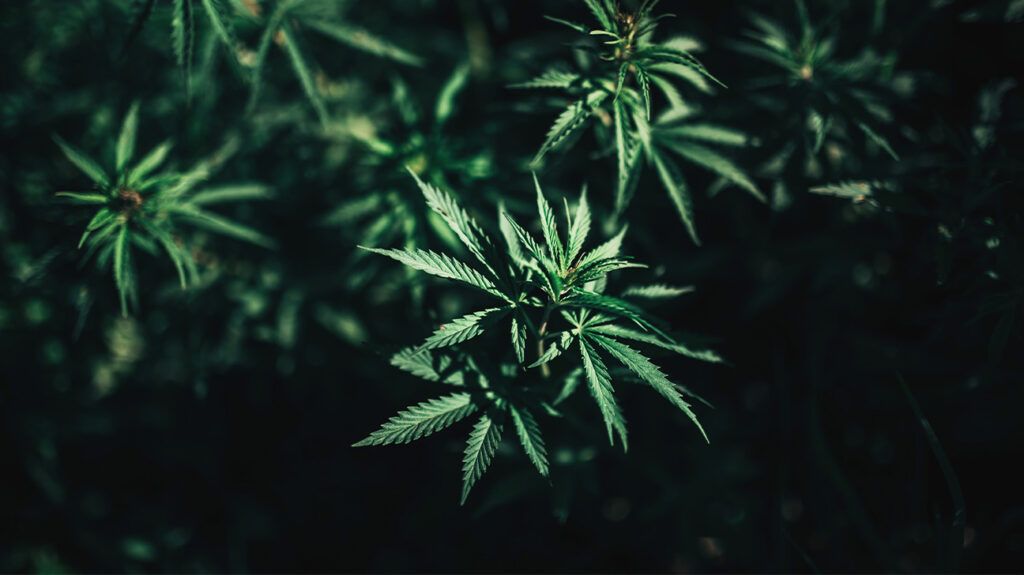Research does suggest cannabis has the potential for addiction, especially when a person uses it frequently or starts using it during childhood or adolescence.
Cannabis is one of the most popular recreational drugs in the United States. It is now legal for recreational and medical use in many U.S. states.
Some cannabis products contain the chemical compound tetrahydrocannabinol (THC), which can cause changes in thoughts, mood, and perceptions of reality. THC is what makes a person “high.”
People may use the terms “cannabis,” “weed,” and “marijuana” interchangeably, but the latter term has racist connotations. This article will use “cannabis” to refer to products from Cannabis sativa and indica plants.

According to the 2023 National Survey on Drug Use and Health, 21.8% of people 12 years or older used cannabis in 2023, with the highest percentage of use among young adults ages 18 to 25 years.
A 2023 study of cannabis use in young adults in South Florida also found varying knowledge about this substance among participants. Researchers suggest that most people’s knowledge comes from personal experience and anecdotal evidence.
Overall, study participants had a favorable outlook toward cannabis. They reported potential health benefits and expressed a desire for scientific research to investigate these potential benefits.
However, despite perceived benefits, cannabis has the potential for addiction, primarily due to THC.
Some estimates suggest that
According to the National Institute on Drug Abuse (NIDA), the strength of delta-9 THC, the most common form of THC, in illegal cannabis products has increased from 3.96% in 1995 to 16.14% in 2022.
Researchers associate higher THC concentrations with a greater risk of someone developing cannabis use disorder (CUD).
The NIDA suggests that stopping cannabis use after frequent, heavy, or long-term use can cause withdrawal symptoms even when someone does not have CUD.
Cannabis use disorder (CUD)
CUD is a type of substance use disorder that may occur when someone frequently uses cannabis. The NIDA highlights research suggesting that 22% to 30% of people who use cannabis have CUD.
However, court-mandated drug treatment may affect this rate, since people may have a choice of rehab with a CUD diagnosis or incarceration.
Certain factors, such as delivery method and THC content, may affect someone’s risk of CUD.
A 2016 study suggests that non-inhaled delivery methods, such as an oral mouth spray, may not affect levels of misuse, dependence, or diversion, which is the illegal distribution or misuse of prescription drugs.
However, in a
As well as the frequency of cannabis use, factors that may affect someone’s risk of CUD include a family history of substance use and how long someone has been a cannabis user.
According to the Diagnostic and Statistical Manual of Mental Disorders, 5th edition, text revision (DSM-5-TR), CUD
Someone with CUD may experience cravings and an increased tolerance for cannabis. They may also neglect social or work obligations to use the substance.
Cannabis use
Many addictive substances affect how the brain responds to dopamine. Dopamine is a chemical in the brain called a neurotransmitter. Medical experts believe it supports feelings of motivation and reward.
Short-term use of these substances may heighten dopamine activation, increasing feelings of happiness and pleasure.
Over time, use may undermine dopamine production, causing someone to use more of the drug or to use it more often to attain the same feelings of pleasure, which can lead to dependence and addiction.
A 2018 review suggests that cannabis may have less effect on dopamine than alcohol and opioids and highlights the need for further research. Similarly, another 2018 review suggests that cannabis does affect dopamine but to a lesser extent than other drugs.
Some people may use cannabis to avoid negative experiences, such as trouble sleeping, anxiety, or depression. This may spur people to use it regularly over a longer term, increasing the risk of CUD and addiction.
People who stop using cannabis regularly may also report withdrawal symptoms, such as:
- cravings
- irritability
- pain
- sleep problems
This may cause people to use the substance again to relieve their symptoms, which may lead to dependence.
People are
- using larger amounts of cannabis or over a longer period than intended
- persistently desiring to reduce cannabis use without success
- spending a lot of time getting, using, or recovering from cannabis
- cravings
- neglecting social obligations to use cannabis
- using cannabis despite it causing social or personal issues
- giving up hobbies, social activities, and work to use cannabis
- using cannabis despite physical or mental effects
- using cannabis in situations that pose a risk of physical harm, such as while driving
- increased tolerance, which may cause someone to use larger amounts of cannabis
- withdrawal symptoms after stopping cannabis use
Healthcare professionals may grade CUD as mild, moderate, or severe depending on how many of the above criteria a person meets. Severe CUD is also known as addiction.
People can speak with a doctor for more advice and information if they experience any of the above criteria.
Treatment for CUD and addiction is similar to treatment for other substance use disorders. The right strategy depends on the person’s lifestyle and the severity of CUD.
Stopping cannabis use gradually
Doctors may recommend medication to treat underlying issues or symptoms of cannabis withdrawal. For example, if someone uses cannabis to relieve anxiety, a doctor may recommend anxiety medication, and taking this may make it easier to avoid the drug.
Doctors will not typically prescribe anything to relieve cannabis intoxication. They may encourage completely stopping cannabis use if someone has CUD.
Some people may find that being in a calm, non-stimulating environment helps their recovery. Doctors may also suggest counseling to help someone develop healthy coping skills and modify behaviors they wish to change.
Like other substance use disorders, cannabis use disorder and addiction can lead to withdrawal symptoms, dependence, social challenges, legal issues, and more.
Addiction is a medical condition, not a personal or moral failing. Support and treatment are available if someone develops cannabis use disorder or wants to stop using cannabis.
People who use cannabis should be aware that there is a risk of addiction, especially as THC levels grow stronger. People can speak with a healthcare professional for support with their substance use.


